
Features
4 MIN READ

By helping them understand the importance of balanced feed, a Nawalpur-based grass resource center is providing farmers with the means to grow and balance their own livestock feed.

Maya Devi Basyal knows her grass very well. She, along with two women she’s employed, grows fields of different varieties of grass on her farm in Tamaspur of Madhyabindu Municipality in Nawalpur district. She has separate beds for teosinte, a type of grass that is rich in carbohydrates, oat grass, which is used primarily for livestock feed, sorghum-sudangrass, which is used for forage, and proteinous grass like vetch, grass peas, and legumes.
Basyal sources her grass saplings and seeds from the Goras Ghans Vikas Shrot Kendra, or the Goras Grass Development and Resource Center, which houses hundreds of grass and fodder varieties. Established more than a decade ago, the center sells seeds, saplings, and grass to farmers raising cattle and operating poultry farms. It also provides training on how to grow grass that is a good source of protein and carbohydrates for their livestock, poultry, and even human consumption.
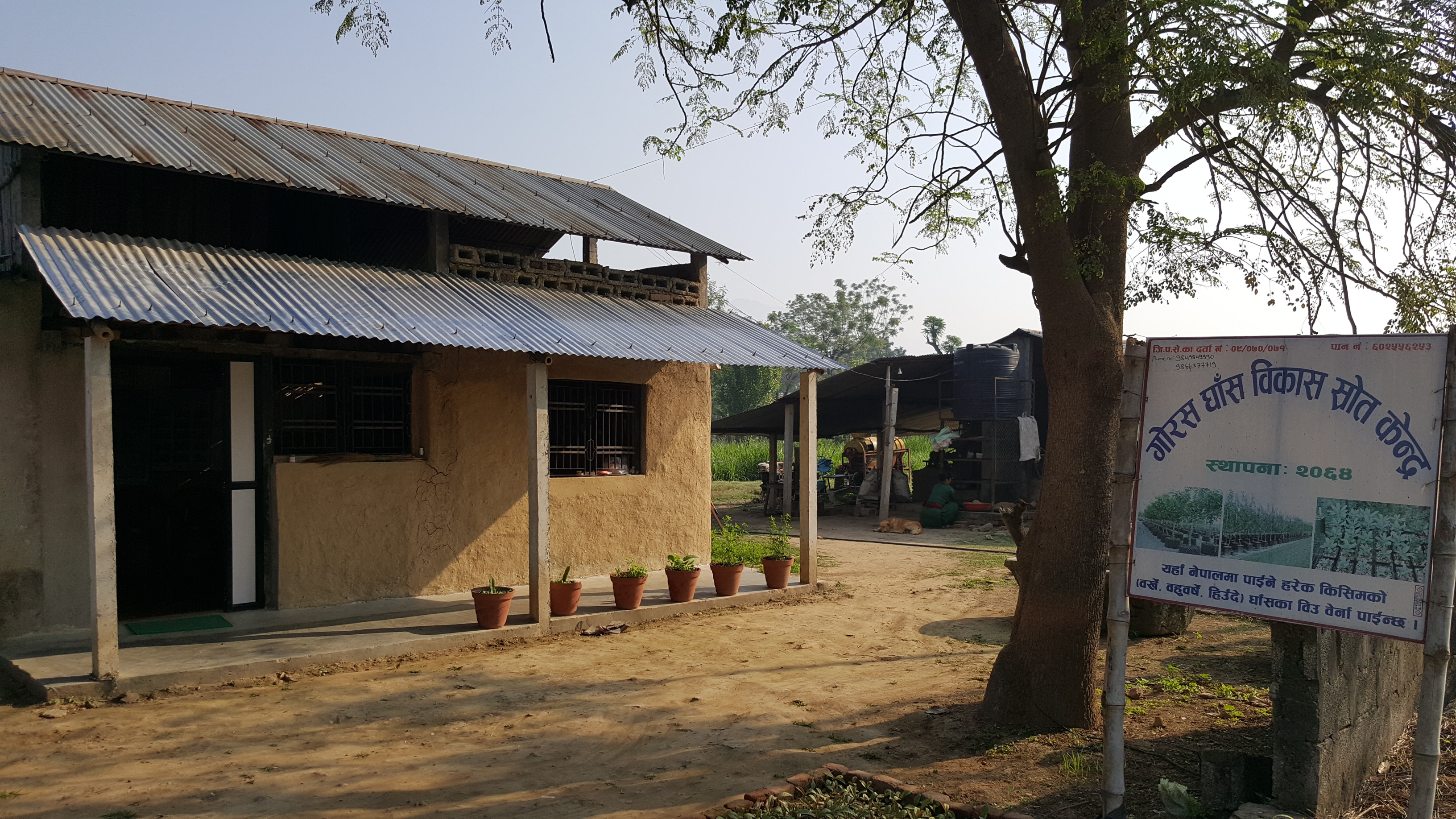
Basyal received training at the center as part of the nonprofit Practical Action’s ‘dairy for development’ project, and has been putting what she has learned into practice. She has learned how to balance the nutrients in the feed for her cattle to get optimum quality and quantity of milk.
“Earlier, one buffalo used to give four liters of milk a day and a cow used to give six liters,” said Basyal. “However, after feeding them balanced feed and grass, one buffalo gives around six liters of milk and a cow gives nine liters. Even the percentage of fat in the milk has increased from 3-4 percent to 4-5 percent.”
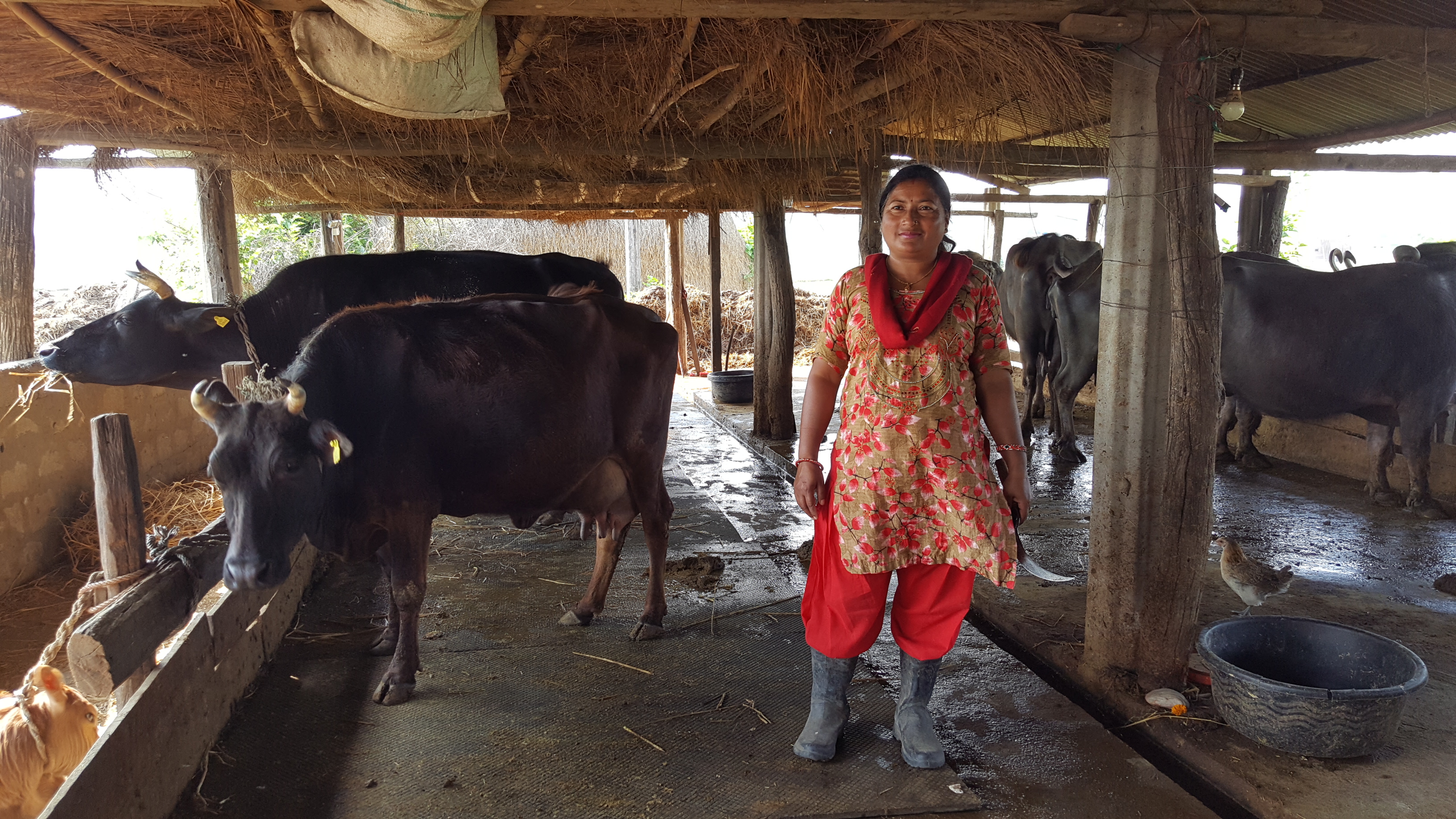
Such resource hubs are crucial support centers for an agrarian society like Nepal. A majority of households in rural Nepal rear cattle, keep goats, or raise poultry. All of these animals and birds require feed and the healthier the feed, the better their eggs, milk, and meat.
While Basyal has a medium-sized farm of 20 cattle that includes buffaloes, cows, and calves, Bhola Nath Lamichhane has a relatively larger one called the Kewalani Pashu Farm, with a capacity of holding 30 cows and buffaloes. Lamichhane too grows and harvests grass himself to feed his animals. But he’s also branched out into growing fodder trees like ipil-ipil, bauhinia, and monkey fruit, among others, to feed his animals.
According to Lamichhane, balancing the diet of his cattle has reduced his costs by 15 percent as he doesn’t have to buy commercial feed anymore.
“I have planted annual (teosinte, oat, berseem, vetch, bajra) and perennial forage (super napier, mulato, stylo, dasmodium) along with fodder (flemengia and mendula) on my farm and they are keeping my cows healthy and productive,” he said.
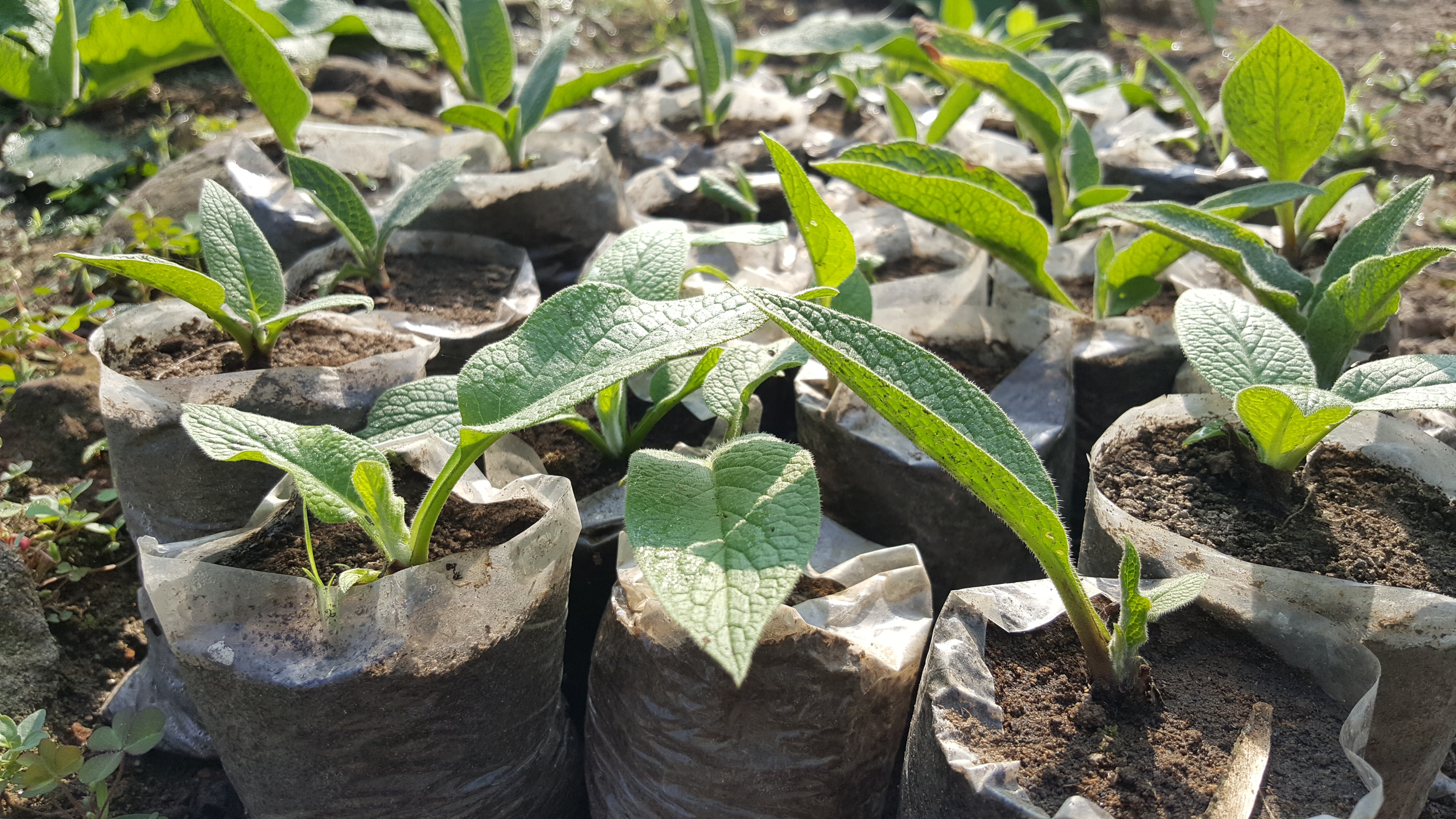
The varieties of forage and fodder Lamichhane has planted are available even during the dry season and as a result, his milk production has remained stable throughout the year. His grass and fodder fields also serve as demonstration sites for smallholder farmers who drop in to learn the tricks of the trade.
Lamichhane’s income too has increased, thanks to the improved milk production.
“I make around Rs 300,000 per month selling milk,” he said. “Out of which, Rs 80,000 is the net profit.”
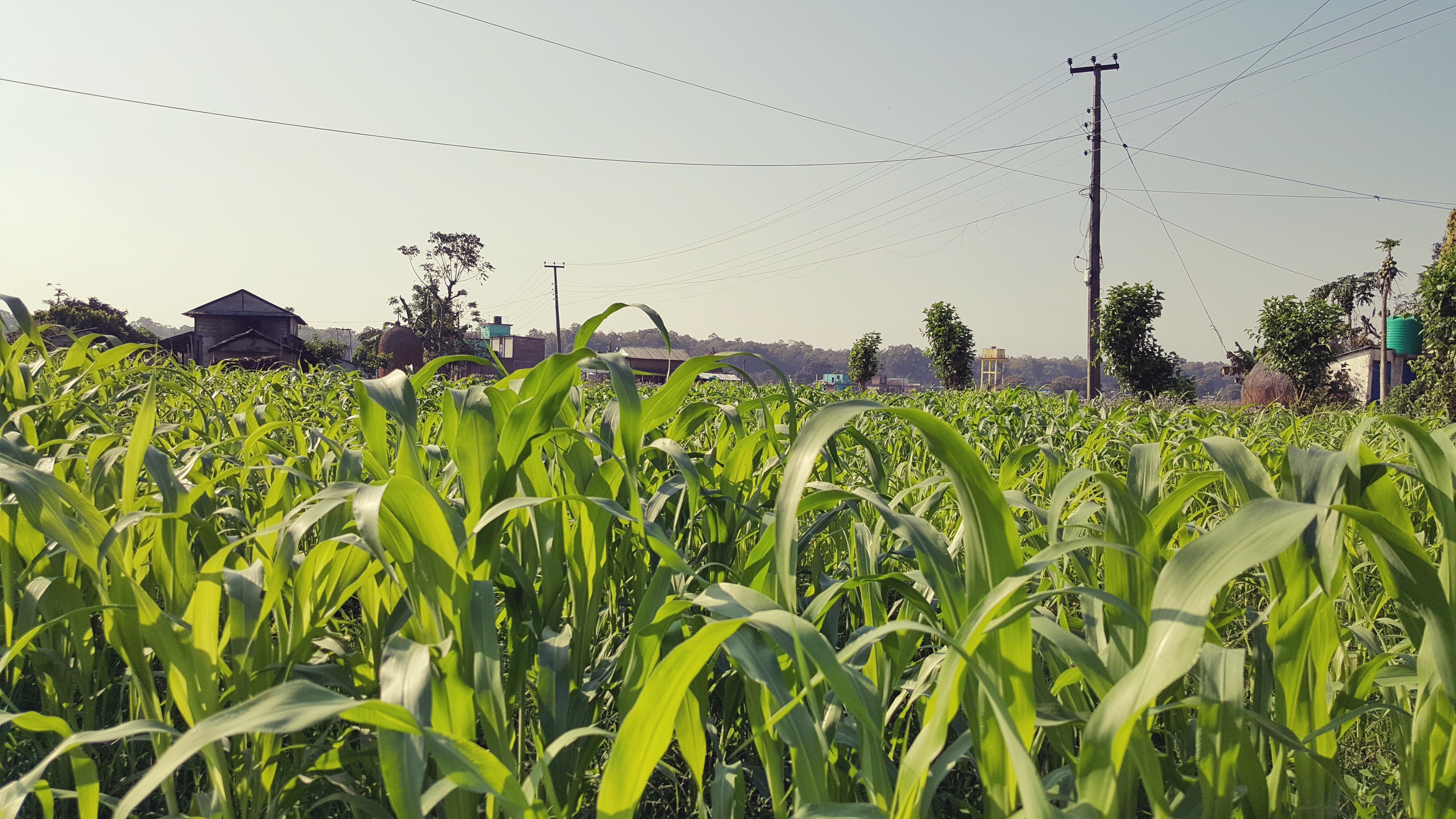
While farmers with mid-level and large farms are able to grow grass separately, it is not possible for smallholder farmers to grow grass on their own. They usually collect grass from the nearby fields and community forests to feed their animals and prepare a balanced feed that includes grain chaff, hay, green grass, mustard cake, salt, and minerals.
Such a practice is seen across Nepal, especially in the Tarai. In Nepalgunj’s Ghasiyaran Tole, men and women still sell large heaps of grass collected from the forests as their only form of livelihood. Their customers are primarily donkey, horse, and goat owners.
Farmers from other districts too are learning from Nawalpur’s grass center. In Chitwan, Saru BK from Kalika Municipality has three milking cows and has been using what she learned during training to feed her cows better.
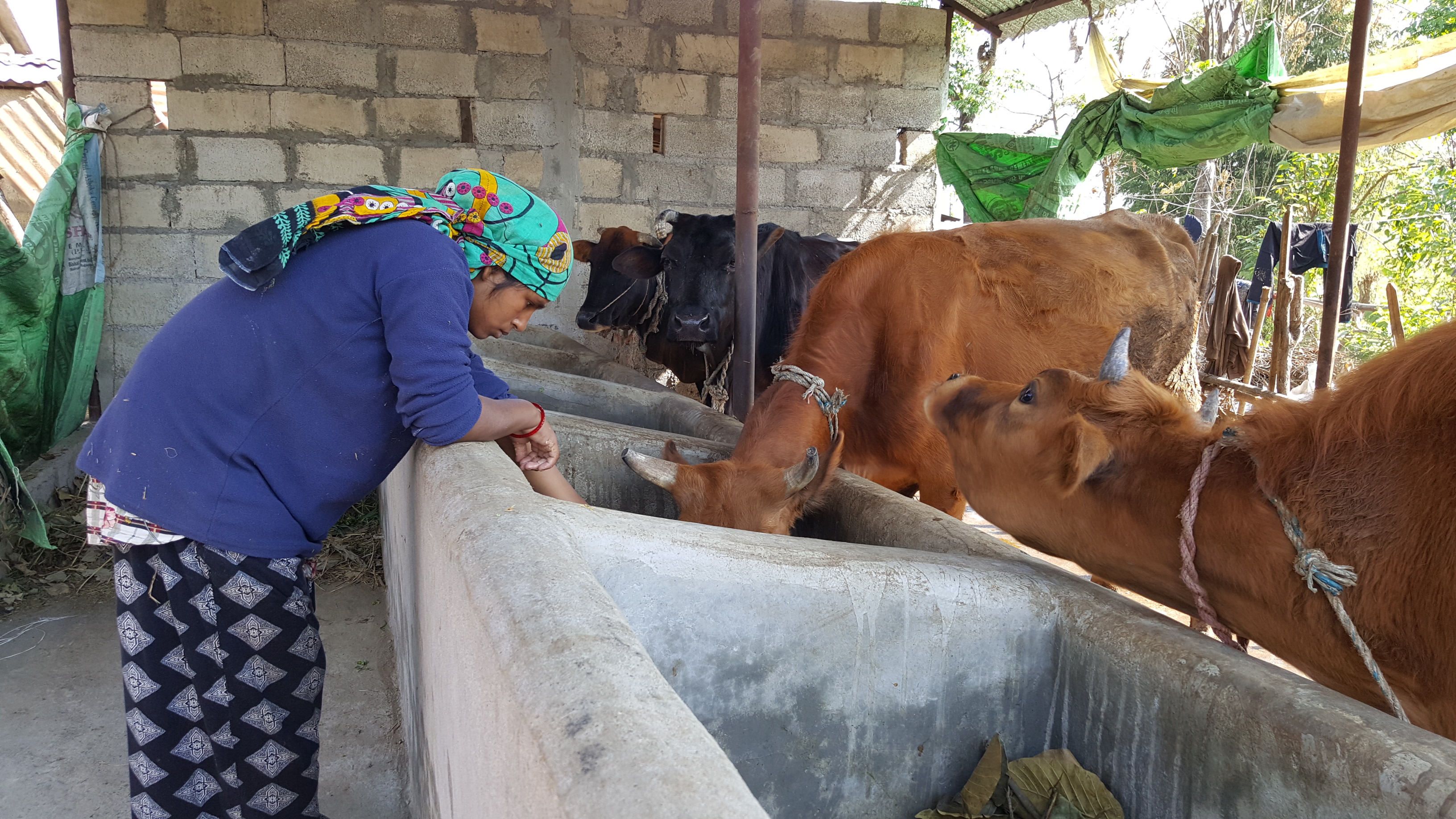
“I didn’t know about balanced feed and how to prepare it,” said BK. “Now I give green grass, fodder, and bran to my animals. I also know when and how to feed the animals.”
Basyal and Lamichhane have also been able to focus on creating other income avenues beyond cattle rearing, which has helped their finances. Basyal, who started rearing cows after her husband returned home disabled after meeting with an accident in Saudi Arabia, also manages a women’s saving and credit cooperative. Lamichhane, who worked for eight years in Kanpur, India, is today a satisfied farmer, always ready to help others.

Perspectives
7 min read
While there is much to appreciate in Gates’ new book on climatechange, he fails to unpack the political complexities of the climate crisis
Features
3 min read
Rara National Park in the winter is a paradise for birdwatchers who wish to see rare migratory species arriving from as far away as Russia and Mongolia.
Features
5 min read
As no formal orders have been placed and no agreements drawn up, even the Health Minister is looking to the gods.
Books
12 min read
Eight young Nepali writers imagine the possible futures of climate change in a new collection featuring poetry and short fiction.
Perspectives
Opinions
4 min read
Development and environmental preservation are not antithetical goals
Perspectives
8 min read
Mayor Balen Shah’s commitment to improving Kathmandu’s solid waste management system is cause for optimism. But there are no overnight solutions, and the spotlight must stay on the issue.
Perspectives
10 min read
Fossil fuel-enabled developed nations are now realizing that they are not immune to the impacts of climate change, but the worst effects will be--and are being--felt by poorer countries.
Features
12 min read
For the ordinary residents of Nijgadh, the airport has already come—as the fear and uncertainty that now pervade the everyday, of being displaced and dispossessed